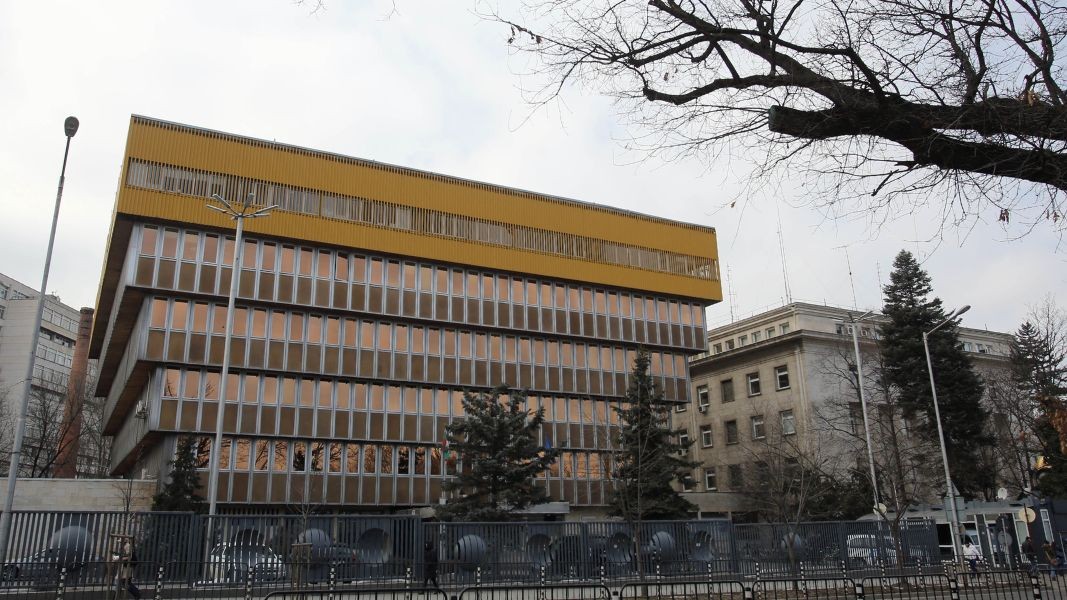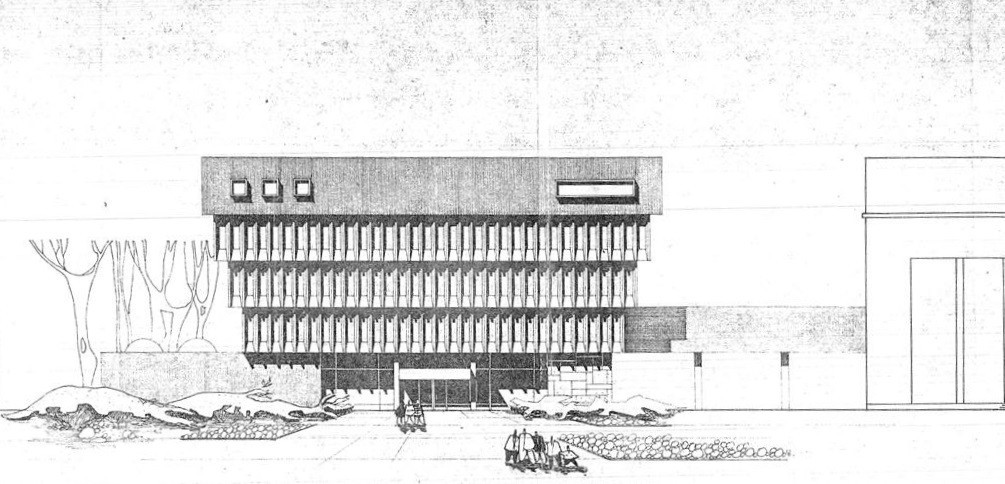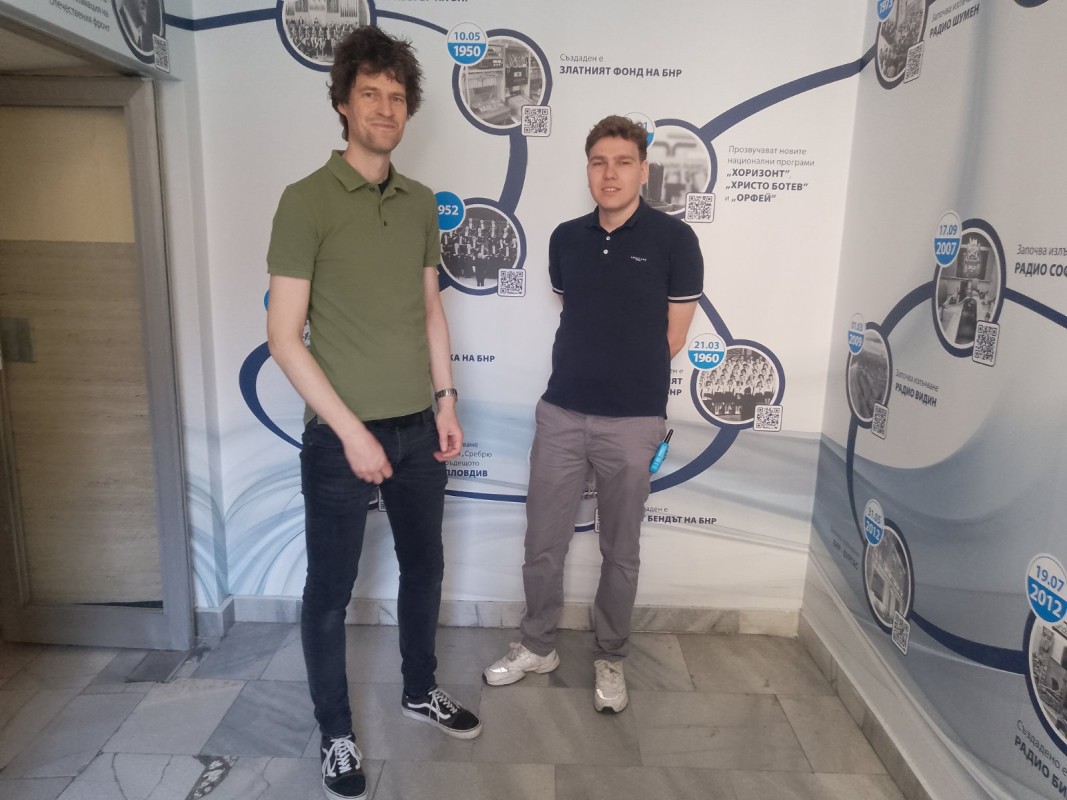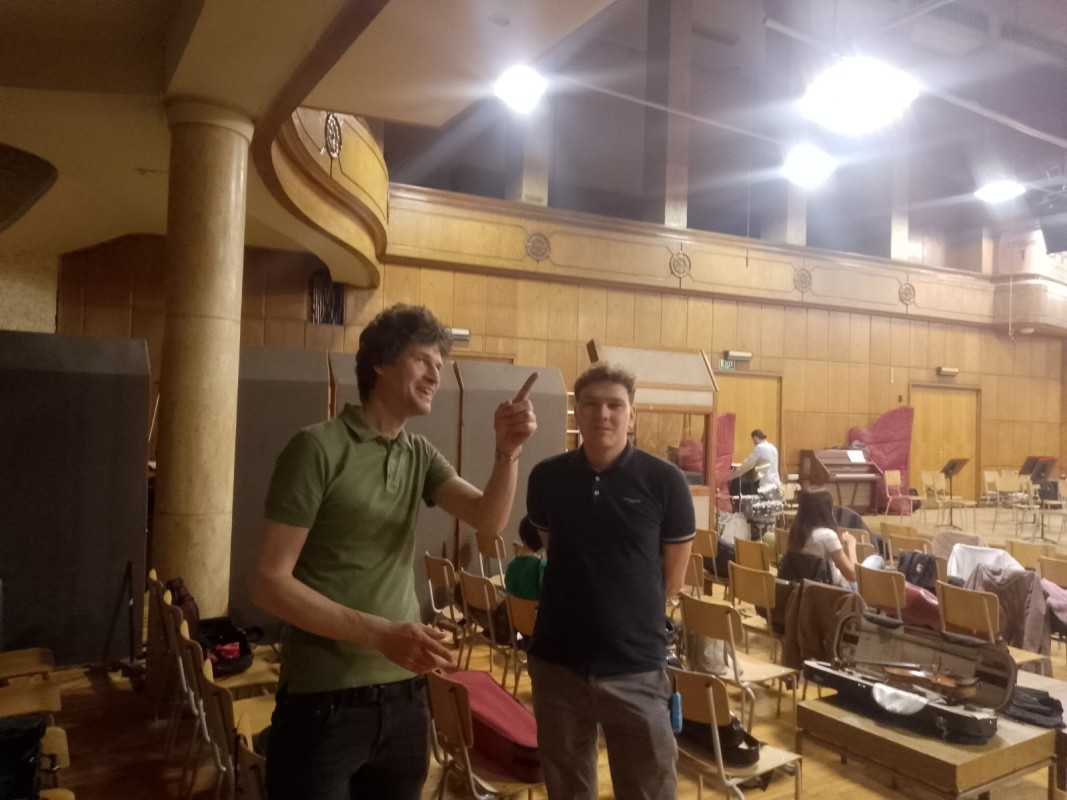This year, 2025, marks the 55th anniversary of the groundbreaking ceremony for the new Bulgarian National Radio building at 4 Dragan Tsankov Street. Construction began on 17 August 1970 on what would become one of Sofia's most famous buildings. It is shaped like an inverted pyramid.
The building was designed by the famous architect Georgi Stoilov, who was also the Mayor of Sofia at the time. He was joined by his younger colleague, Dimitar Andreychin, who played a key role in the project.
Their task was to create a building with a distinctly modern design. The result was the first of its kind in Bulgaria - and one of the few in the world - where each floor is larger and more spacious than the one below, forming the iconic upside-down pyramid.

"I think the image of the building is very fascinating, with its inverted pyramid form, which already intrigued us, says Pieter Algesman, who teaches at the Academy of Architecture in Arnhem. - And the architect, Georgi Stoilov, is famous, so that was a good reason for us. Do you know about him, by the way? Well, we do know his masterpiece—the so-called UFO building—which, unfortunately, we won't get to see.
So this is the second-best thing for us. I can't say we have anything similar in the Netherlands, so for us, every year we do this kind of trip with the students, and we're always looking for something that isn’t Dutch—so the students can learn from other design cultures.

Bulgaria, I think, is a splendid country at the crossroads of so many influences and cultures throughout history. And even now, it's in the heart of a lot of things happening—not only politically, but also architecturally—so of course, that's our main interest."
The professor and his students are particularly interested in the variety of architectural styles and influences here. One of them, Yorick, comments:
"We're actually interested in the clash between East and West. It's clearly visible here, since we can find Ottoman architecture, but also more modern architecture. And then, from the Socialist and Communist periods, there's a lot of architecture left from that time. We don't have that in the West. Especially Brutalism and Modernism are actually very interesting to us."
Yorick doesn't know much about the history of the Bulgarian National Radio building, but he shares his impressions purely from an architectural point of view.

Boriana Kondova is a Bulgarian architect based in the Dutch city of Arnhem. She works with one of the professors in the visiting group, which is why she's their guide to architectural landmarks often overlooked by Western eyes.

"What fascinates them is the atmosphere here — the world we used to live in, which they've never experienced. Take the remnants of communism, for example. For them, it’s something worth exploring, even reimagining conceptually,” she says.
So whether it’s classic or modernist, gleaming or crumbling—and yes, sometimes disappointingly plain—let’s take a moment to appreciate the spaces we inhabit. After all, if visitors can see the value in them… why shouldn't we?
Bulgarian violinist Svetlin Roussev, a professor at the Paris Conservatoire, performed a solo concert on 24 September at the Imperial Church in Vienna’s Hofburg Palace, Austria . He appeared at the invitation of the Bulgarian Cultural Institute “Haus..
The second largest city in Bulgaria - Plovdiv, is hosting the Days of Argentine Culture and Art for the first time from September 25 to 28 th . The four-day festival includes exhibitions, literary readings, concerts with musicians..
The film “Made in EU”, directed by Stephan Komandarev, won the Golden Rose Award for Best Feature Film at the Golden Rose Bulgarian Feature Film Festival in Varna. According to the jury, it is an uncompromising work that, in addition to reflecting..
Sylvia Tomova, a star of the Bulgarian stage, received her training at the Vaganova State Ballet Academy in Saint Petersburg. Her career has been closely..
Canada-based Bulgarian artists Petar Boyadzhiev and Daniela Zekina will present their joint exhibition “AlterEgo” in Chicago on November 1 . Their new..
Bulgaria participated in the international exhibition titled “EU Poetry-Verses Across Borders”, the Embassy of Bulgaria in Doha announced on Facebook...

+359 2 9336 661
